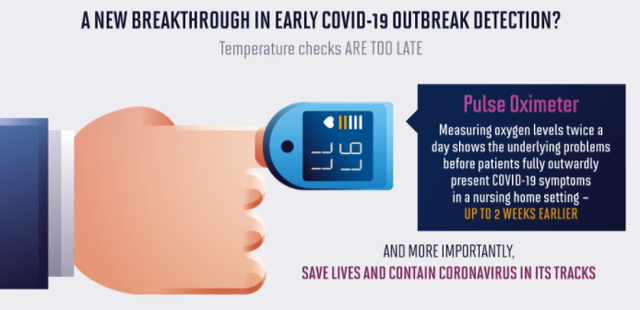The Most Valuable Lesson Nursing Educators Should Teach Amidst COVID-19

Now that nursing home deaths have been included in the COVID-19 tally, the United Kingdom has officially seen more than 26,000 deaths. This places Britain in second place for most Coronavirus deaths in Europe. In percentage form, roughly 15.8% of Britains who have caught the virus have gone on to die.
More specifically, The Care Quality Commission reported 4,343 deaths in U.K. nursing homes between April 10 and April 24. Senior citizens already higher risks of contraction. Even with lockdown procedures in place, seniors can spread the virus to their caregivers, who can go on to infect outsiders.
Temperature checks are the current practice caregivers are using to pre-detect if their residents are carrying the virus. However, this doesn’t work for asymptomatic carriers; so by the time the patient actually shows a fever, they could’ve already spread the virus or even be on their deathbed. Temperature checks are too late, and there is an urgent need for caregivers to be taught new protocols for early detection.
Nurses Can Easily Detect the Virus Up To 2 Weeks Faster
Patients will benefit more by having the saturation of oxygen carried in their red blood cells and their heart rate measured twice daily. A pulse oximeter can do this within moments – it’s a small, electronic device that gently clamps onto the finger. Using this can show caregivers their residents’ underlying problems before they begin completely showing symptoms of COVID-19 – up to 2 weeks earlier.
This is not to say caregivers and nurses should stop checking temperatures. However, there is a smarter way to do so – such as using a smart thermometer like Kinsa.
Kinsa uses anonymized data to track fevers across the country, drawing from 500,000 local thermometers with 162,000 readings daily. By using adapted algorithms to spot fevers that are inconsistent with typical flu spread patterns, Kinsa can identify likely clusters of COVID-19. With this data, Kinsa has been consistently predicting the spread of COVID-19, accurately forecasting 2-3 weeks ahead of the CDC.
Draw Data to Save Lives:
The issue with COVID-19 isn’t that we lack data, it’s that we aren’t creating it. To defeat this virus, we need to know its severity, how it spreads, its risks factors, and its societal and environmental context.
To be able to use devices like Kinsa, we need local data – not mainstream data. To produce local data, caregivers should track:
- The geographic location of where the virus was detected
- The socioeconomic factors of the infected patient
- Cultural customs and behaviors of the patient
Even if senior living facilities don’t implement these practices in time for COVID-19, they will be valuable teachings for prospective nursing students in the event of a future health crisis. Data saves lives, and nursing homes across the world need this information desperately. The United States has seen 10,000 deaths connected to nursing home residents or caregivers. A change is crucial.












Responses